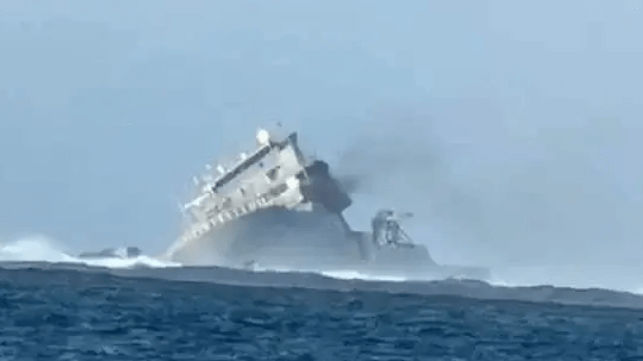New Zealand Court of Inquiry Identifies Training in Loss of Survey Vessel

The Royal New Zealand Navy released the final results of its Court of Inquiry into the shocking October 2023 loss of its survey vessel HMNZS Manawanui, the first vessel lost by the Navy since World War II. While the preliminary report released in November 2024 identified human error issues including failing to disengage the autopilot, the final report delves deeper to identify the underlying issues that they believe contributed to the loss of the vessel.
The interim Court of Inquiry focused on the direct issues, and it put the blame squarely on mistakes made by the crew. Failing to turn off the autopilot, the bridge crew attempted to maneuver the vessel. When the vessel did not respond they failed to check if they had manual control with it taking more than 10 minutes to regain control. The vessel however had grounded and the following morning after the 75 people on board were rescued the ship foundered.
In the final report, the court identified 12 additional issues that it says contributed to the grounding and sinking. Key among them were training issues and the qualifications of the ship’s personnel, as well as planning, instructions and procedures, supervision, haste, leadership, distraction, and interruptions. All these factors they believe made the loss more likely.
The court thanks the officers and crew of the vessel recognizing their braveness as well as their willingness to provide detailed testimony. The result was a 120-page report that was released online for public review.
“The Court found deficiencies in the training and qualifications of key ship’s personnel involved in the incident, risks related to the survey task were not sufficiently identified, discussed, and mitigated, and instructions or procedures were lacking,” said the Court of Inquiry president Commodore Melissa Ross. It also found leadership was inadequate in some areas, supervision was not at expected levels, and time pressure influenced the way the survey task was conducted.
Chief of the Navy Rear Admiral Garin Golding accepted the report acknowledging that it illustrated a gap between work as imagined on shore by command and work as done on the vessel.
“Fundamentally we need to do things differently. We need to adapt to new technologies, change the way we approach what we do, and find new ways to continue to deliver on what is expected of us,” he said.
The Court issued nine recommendations ranging from risk management to training. It cited the process around orders, instruction, and procedures as well as the experience of the crew.
Admiral Golding said the Navy has already moved forward in some areas, such as reviews of risk management, oversight, and documentation. He said among the audits was a review of the state of training. However, he recognized that some of the issues would be more complex and time-consuming to resolve.
“Ultimately, there are a range of issues, including the lack of commonality across the fleet, which means our people need to constantly adapt to new procedures each time they change ships,” said the admiral. He called for embarking on a transformation program that seeks to reform the approach to operating the Navy.
